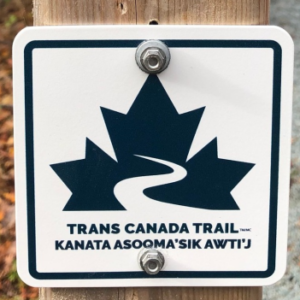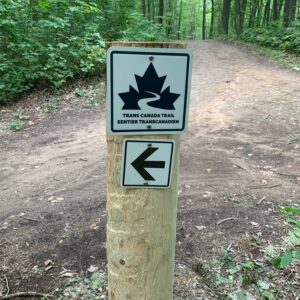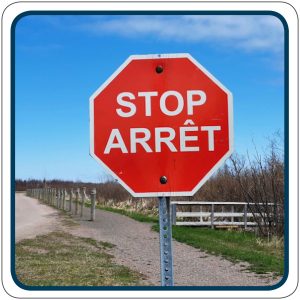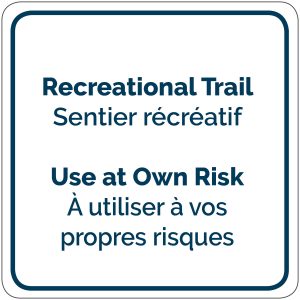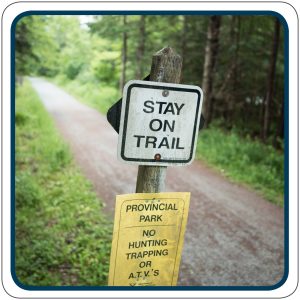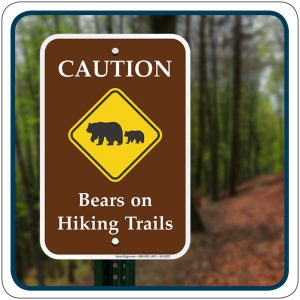Once installation locations have been selected, it is important that the specific placement of each sign is considered and clearly identified.
- Signs must provide adequate clearance from roads and paths, but remain within close proximity to the route. Signs must be installed at a maximum setback of 60 cm to 120 cm (2ft to 4ft) from the edge of the Trail. Minimum setbacks from roadways and walkways vary by local jurisdiction; be sure to verify the requirements specific to each section of the Trail.
- The viewing angle is typically determined by the local jurisdiction. Please consult with your local authority for the requirements in your area.
- Signs and arrows are to be installed at a distance of 170 cm (66”) from the ground. These distances are to be measured from the bottom of the sign to the ground.
- All signs and arrows come with pre-drilled holes that should fit any standard signpost.
- Trail groups are encouraged to use stainless steel or galvanized fasteners when mounting signs, as they will prevent against rust staining the signs over time.
- Whenever possible, signs are to be affixed to their own post. Trans Canada Trail signs should never be affixed to an existing road sign, unless prior authorization has been granted.
- Indigenous wayfinding sign
- Standard wayfinding sign
What about regulatory signage?
Regulatory signs are used to indicate traffic laws, regulations and requirements to reinforce proper user etiquette and ensure public safety on specific Trail sections. Please consult the guidelines developed by your provincial or territorial department of transportation for examples of regulatory signage used in your area.
- Regulatory signs should be installed at appropriate locations on the Trail to inform users of all usage regulations and associated risks. These signs are typically installed around access point parking lots.
- Speed limit signs and traditional traffic signs (i.e. Stop or Yield signs) are typically installed on multi-use trails, route intersections and crossings.
- Signs indicating “Recreational Trail – Use at Own Risk” are to be posted at main access point for the Trail, in close proximity to regulations depicting appropriate Trail use.
- It is strongly recommended that additional signs be posted indicating the code of conduct, emergency contact information and all other important Trail information, if this is not otherwise posted on the Trailhead. For example, should cellphone reception be limited, users should be forewarned. It is important to remember that kilometre markers can be useful for first responders in locating injured users in an emergency.
- The use of the official language(s) recognized by the province or territory of installation is mandatory on all regulatory signs. It is strongly recommended to determine if adding additional languages is necessary to meet the needs of local users.
How to apply decals
Please consult our Signage Best Practices Guidelines before requesting via our online submission form. If you have any questions, contact us at signage@tctrail.ca.



